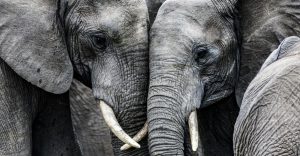The panda may have originated in Europe before migrating to China.
Others are reading now
Recent discoveries in Allgäu, southern Germany, have unveiled fossils of an ancient panda ancestor, Kretzoiarctos beatrix, providing compelling evidence that these early pandas were omnivorous.
11 Million Years Ago
Unlike today’s giant pandas (Ailuropoda melanoleuca), which primarily feed on bamboo, Kretzoiarctos beatrix had a more varied diet that likely included meat, similar to modern brown bears.
The study, led by an international team from universities in Hamburg, Frankfurt, Madrid, and Valencia, examined the dental remains of this extinct species, which lived around 11 million years ago, according to WP.
Their findings indicate that these ancient pandas were not strictly herbivorous and likely consumed a range of foods, including plants, small mammals, and possibly fish. This omnivorous lifestyle may have enabled them to thrive in the diverse ecosystems of prehistoric Europe.
Also read
Originated in Europe?
Published in Geobios and Papers in Palaeontology, this research builds upon previous fossil discoveries in Spain and Bulgaria, suggesting that Kretzoiarctos beatrix may have originated in Europe before migrating to China.
The researchers compared the tooth morphology of this ancient species with that of modern giant pandas and other bear species, revealing distinct characteristics that point to a more flexible dietary approach.
Dr. Nikolaos Kargopoulos, a key researcher, emphasized the importance of these findings for understanding panda evolution and the dietary adaptations that have occurred over millions of years.
The evolution from an omnivorous ancestor to the highly specialized herbivore seen today raises intriguing questions about how environmental pressures and resource availability shaped these animals’ feeding habits.








